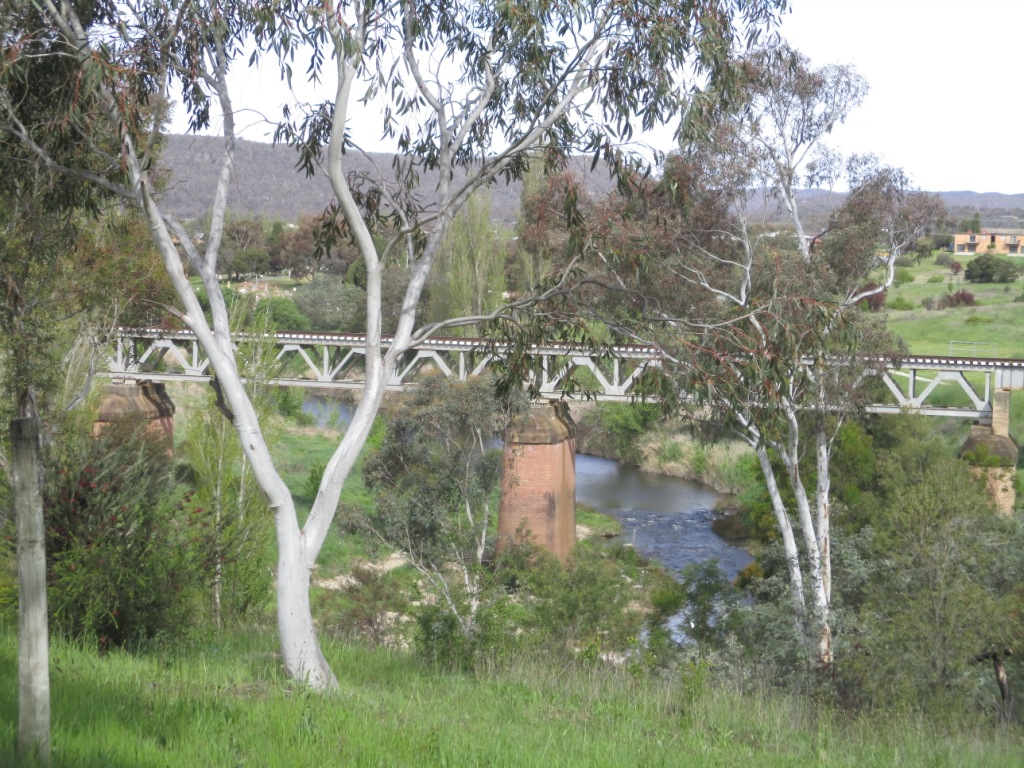In the run-up to the recent ACT Election, a slightly Orwellian situation became apparent. It seems that all Canberrans are equal, only some Canberrans are more equal than others. There are Canberrans whose suburbs get their public land mown regularly, and those that seem not to. I was taken aback when I visited Oaks Estate last week (and yes, it is still a surprise to many that it is actually in the ACT) to find the small central Gillespie Park knee-high in grass and weeds. It was a lovely spring day and there was no one in the park. I was later told that it wasn’t actually snakes that are the principal problem, but rather needles discarded in the long grass. Although the park and the adjacent public land has now been mown, and the online mowing chart now shows Oaks Estate is scheduled every four weeks during the warmer months, it is a small victory. The residents of Oaks Estate have experienced many decades of broken promises and the inability of previous governments to do what they are voted in to do, and that is look after all the people of Canberra equally.

Gillespie Park located on the corner of River Road and Hazel Street, Oaks Estate.
So for those who are new to Canberra and have never stumbled across this quaint little hamlet sheltering in a bend in the Molonglo River where it meets the Queanbeyan River, what is there and what was all the fuss about in the lead up to the recent ACT election?
To start, there are a number of very charming, old and rustic buildings that are in dire need of heritage management. Oaks Estate is part of the region’s early colonial heritage, with many buildings dating from the middle of the 19th century, and it is located away from the rest of Canberra right on the border of NSW near Queanbeyan.
In the 1970s, a number of blocks of flats were built that are now used for public housing, and this has resulted in a much higher than average rate of public housing tenants. These members of our community experience disadvantage for a number of reasons, but not least is that the housing provided is below standard and through no fault of their own, they are physically removed from the sort of amenity that could improve their lives. Residents pay excessively high rates, especially considering very little is provided in exchange. Unlike the rest of Canberra, Oaks Estate doesn’t have an ACTION bus route that would take residents direct to Civic and to the local community service in Narrabundah whose Food Bank would be of use to some of the disadvantaged and elderly residents.

View over the Queanbeyan River and rail-bridge built in about 1887 from Oaks Estate
So who cares about the Oaks Estate? There is a passionate and engaged group of people who live there who want a better life for all residents. It has become apparent that despite the best efforts of Oaks Estate Progress Association (OEPA) and the energy of people like its Vice President Hugh Griffin, enormous effort has been put into identifying the major issues and seeking assistance, but the right sort of doors remain firmly closed. But this isn’t a community that has asked for help, been rejected and gone away quietly. They have honestly and consistently identified what needs to be done and now the ACT Government and the various Ministers responsible need to take a long hard look at all the issues that affect this community and come up with progressive and equitable solutions.
The sorts of things that provide the ‘glue’ that keeps a community together are actually being driven from within the community. There is a community garden which although currently under-subscribed, will become part of a greater plan to use adjacent currently vacant land to build a community orchard. Through sheer determination, the residents have got a commitment from a few sources to get a public toilet built and this will connect with the orchard. A more regular mow of the small park would do an enormous amount to encourage usage. There is also an absence of activities that could bring the community together, and something as simple as a Men’s Shed would be a positive and useful activity for the many unemployed and older residents.

Unfortunately, the only shop is a bottle shop, although there is a small but interesting mix of commercial residents, including two nurseries, an antique conservation business and Japanese wood artist Hiroshi Yamaguchi has just moved his studio workshop into William Street. I am sure there are people who are able to overlook some of the more obvious flaws of life in Oaks Estate and take delight in the rural setting, views of the river and wildlife. However, Oaks Estate remains in a state of flux with people struggling with a vision that could provide transformation, and finding it difficult to move forward because of so many unresolved issues.
So, as a reminder, there were four major concerns identified and discussed publicly prior to the election:
- The first was a request for an ACTION bus to connect the community directly to the centre of Canberra.
- The second issue concerned the preservation of the heritage of Oaks Estate. In a city sadly depleted of early buildings, I was perplexed when I discovered the issues the Heritage Council has had with finalising the heritage precinct nomination, especially as three expert reports have recommended strong heritage protection for the village. The 2013 Heritage Assessment is quite clear in its recommendations and ongoing uncertainty regarding heritage listing will deter people who may be interested in restoring the old homes of Oaks Estate
- The third issue is the high percentage of public housing tenants, housed in below standard studio and one-bedroom flats that provide low levels of comfort and poor outcomes in terms of amenity and insulation. This housing should be immediately included in the Public Housing Renewal Program and updated as in other Canberra suburbs.
- The fourth and final issue is road and pedestrian safety. On my recent visits, I experienced heavy and fast moving traffic along Railway Street and an official survey has provided a figure of over 4,000 cars a day. The adjacent streets such as Hazel Street and McEwan Avenue also experience quite a lot of traffic and installation of traffic calming devices would make life a lot safer for both drivers and pedestrians and assist in retaining the village atmosphere

And so to the future, and we must remember this is a community that is motivated and wants to move forward. It would be reassuring to imagine there will be some positive changes soon: provision of an adequate ACTION bus services to connect Oaks Estate with the rest of Canberra; a heritage plan will be approved that nuts out the needs of the people who love their old homes to allow them to sympathetically restore and extend; a complete audit made of the public housing to improve the quality of accommodation whilst also reducing the quantity to, at the very least, match the Canberra average; and Roads ACT takes a good look at what is needed to make the roads safe for children, the elderly, pets, visitors following the heritage trail and local motorists.
We have just started a new term of government. If someone who has the power to implement change is brave enough to just acknowledge that something needs to be done, it will be a start. The system has broken down and to an outsider it looks like this is a community that is living on a knife edge. What needs to happen to make the rest of Canberra start to take an interest in this level of inequality and the all too obvious potential for tragedy?


















